Popular categories
Looking for a yarn?

65% Wool, 35% Alpaca
from 2.60 € /50g
Order DROPS Needles & Hooks
Clicking the ORDER button will redirect you to Saules siulas website
The yarn cost is calculated from the pattern’s smallest size and the yarn’s cheapest product type. Looking for an even better price? You might find it on the DROPS Deals!
Diamond Sky
Knitted vest / slipover in DROPS Lima or DROPS Merino Extra Fine. Piece is knitted with cables, textured pattern, double neck edge and sleeve edges. Size: S - XXXL
DROPS design: Pattern no li-140
Yarn group B
----------------------------------------------------------
SIZE:
S - M - L - XL - XXL - XXXL
MATERIALS:
DROPS LIMA from Garnstudio (belongs to yarn group B)
350-350-400-450-500-500 g colour 9020, pearl grey
Or use:
DROPS MERINO EXTRA FINE from Garnstudio (belongs to yarn group B)
300-350-400-400-450-500 g colour 05, light grey
NEEDLES:
DROPS CIRCULAR NEEDLE SIZE 4 mm: Length: 80 cm
DROPS CIRCULAR NEEDLE SIZE 3 mm : Length 40 and 60 cm.
DROPS CABLE NEEDLE - for cables.
KNITTING TENSION:
21 stitches in width and 28 rows vertically in stocking stitch = 10 x 10 cm.
NOTE! Remember that needle size is only a suggestion. If you have too many stitches on 10 cm switch to larger needles. If you have too few stitches on 10 cm switch to smaller needles.
-------------------------------------------------------
Alternative Yarn – See how to change yarns here
Yarn Groups A to F – Use the same pattern and change the yarn here
Yarn usage using an alternative yarn – Use our yarn converter here
-------------------------------------------------------

65% Wool, 35% Alpaca
from 2.60 € /50g
Order DROPS Needles & Hooks
Clicking the ORDER button will redirect you to Saules siulas website
The yarn cost is calculated from the pattern’s smallest size and the yarn’s cheapest product type. Looking for an even better price? You might find it on the DROPS Deals!
- English (UK/cm), Lithuania
- Česky
- Dansk
- Deutsch
- Eesti keel
- English (UK/cm)
- English (US/in)
- Español
- Français
- Íslenska
- Italiano
- Magyar
- Nederlands
- Norsk
- Polski
- Português
- Suomi
- Svenska
- English (UK/cm), Bulgaria
- English (UK/cm), Croatia
- English (UK/cm), Greece
- English (UK/cm), Latvia
- English (UK/cm), Romania
- English (UK/cm), Slovenia
- Česky, Slovakia
Pattern instructions
EXPLANATION FOR THE PATTERN:
----------------------------------------------------------
GARTER STITCH (back and forth):
Knit all rows.
1 ridge vertically = knit 2 rows.
PATTERN:
See diagrams A.1 to A.4. Diagrams show all rows in pattern seen from the right side.
CAST-OFF TIP:
To avoid a tight cast-off edge when casting off, you may use a larger needle. If this still is too tight make 1 yarn over after approx. every 4th stitch while casting off (cast off yarn overs as stitches).
----------------------------------------------------------
START THE PIECE HERE:
----------------------------------------------------------
VEST – SHORT SUMMARY OF PIECE:
Work front and back piece back and forth in 2 parts. Then assemble the piece at the shoulder seems and sew the side seams. Finish with a double neck edge and sleeve edges in the round on a circular needle.
BACK PIECE:
Cast on 104-115-126-137-148-159 stitches (including 2 edge stitches in each side) on circular needle size 4 mm with DROPS Lima or DROPS Merino Extra Fine. Purl 1 row from wrong side.
Then work pattern as follows: 2 edge stitches in GARTER STITCH – read explanation above, A.1 over the next 99-110-121-132-143-154 stitches (= 9-10-11-12-13-14 repetitions of 11 stitches), work first stitch in A.1, 2 edge stitches in garter stitch. Continue back and forth until A.1 has been worked 5 times vertically. REMEMBER THE KNITTING TENSION.
Work next row as follows:
Knit 2 together (= 1 stitch decreased), work A.2 over every repetition of A.1 (1 stitch is decreased in each repetition A.2 = 9-10-11-12-13-14 stitches decreased), knit the next 3 together (= 2 stitches decreased), cast on 1 stitch at the end of row (= edge stitch). Turn and work 1 edge stitch in garter stitch, purl 1, work A.2 until 1 stitch remains, purl 1, cast on 1 stitch at the end of row (= 1 edge stitch in garter stitch) = 94-104-114-124-134-144 stitches on needle and piece measures approx. 15 cm.
Now work pattern as follows: 1 edge stitch in garter stitch, 1 stitch in stocking stitch, A.3 over the next 10 stitches, A.4 over the next 80-90-100-110-120-130 stitches (= 8-9-10-11-12-13 repetitions of 10 stitches), work 1 stitch in stocking stitch, and finish with 1 edge stitch in garter stitch.
Continue back and forth like this. On 9th row in A.4 knit 1 when last repetition is finished.
When piece measures 24-25-26-27-28-29 cm, cast off 6-6-9-9-12-12 stitches for armholes at the beginning of the next 2 rows. Then cast off stitches in each side (cast off stitches at the beginning of the row) as follows:
Cast off 2 stitches on every other row 1-2-2-2-2-2 times, then cast off 1 stitch on every other row 1-1-1-3-3-5 times and finally 1 stitch every 4th row 4-5-5-6-5-5 times = 68-72-76-80-86-92 stitches. Continue to work until piece measures 49-51-53-55-57-59 cm.
Now cast off the middle 32-32-34-34-36-36 stitches for neck and finish each shoulder separately. Then cast off 1 stitch on next row from the neck = 17-19-20-22-24-27 stitches remain on each shoulder. Now finish each shoulder separately. Continue to work until piece measures 51-53-55-57-59-61 cm. Cast off knitting from right side. Work the other shoulder the same way.
FRONT PIECE:
Cast on and work as on back piece until piece measures 43-45-46-48-49-51 cm. Now slip the middle 16-16-18-18-20-20 stitches on a stitch holder and finish each shoulder separately. Then cast off stitches on every row from neck as follows: Cast off 3 stitches 1 time, 2 stitches 2 times and 1 stitch 2 times = 17-19-20-22-24-27 stitches remain for shoulder. Cast off when piece measures 51-53-55-57-59-61 cm. Work the other shoulder the same way.
ASSEMBLY:
Sew the shoulder seams. Sew side seam from armholes and down to where 1 edge stitch was cast on in each side (= approx. 15 cm vent).
DOUBLE SLEEVE EDGES:
Begin mid under sleeve in side seam and pick up approx. 136 to 162 stitch around armhole with circular needle size 3 mm and DROPS Lima or DROPS Merino Extra Fine. Number of stitches must be divisible by 2.
Work rib in the round (= knit 1/purl 1) for 6 cm. Cast off – read CAST-OFF TIP.
Fold the rib around sleeves on inside of garment. Fasten rib to get a double sleeve edge. To avoid a tight sleeve edge that sticks out it is important to keep the seam elastic.
DOUBLE NECK EDGE:
Pick up from right side approx. 100 to 116 stitches (including stitch on stitch holder) inside 1 edge stitch around the neck on circular needle size 3 mm with DROPS Lima or DROPS Merino Extra Fine. Number of stitches must be divisible by 2. Work rib in the round (= knit 1/purl 1) for 10 cm. Now increase 1 purl stitch in approx. every other section with purl stitches. Then work knit over knit and purl over purl until neck edge measures 14 cm.
Cast off stitches with knit over knit and purl over purl - make sure to avoid a tight neck edge - remember CAST-OFF TIP.
Fold rib at the top of neck down on inside of garment. Fasten rib to get a double neck edge. To avoid a tight neck edge that sticks out it is important to keep the seam elastic.
This pattern has been corrected. Click here to see the correction/s.
Diagrams A.3 and A.4 updated.
Diagram

|
= knit from the right side, purl from the wrong side |

|
= purl from the right side, knit from the wrong side |

|
= slip 1 stitch on cable needle behind piece, knit 1, knit 1 from cable needle |

|
= slip 1 stitch on cable needle in front of piece, knit 1, knit 1 from cable needle |

|
= slip 1 stitch on cable needle behind piece, knit 1, purl 1 from cable needle |

|
= slip 1 stitch on cable needle in front of piece, purl 1, knit 1 from cable needle |

|
= there is no stitch. Move to next symbol in diagram |

|
= purl 2 together |
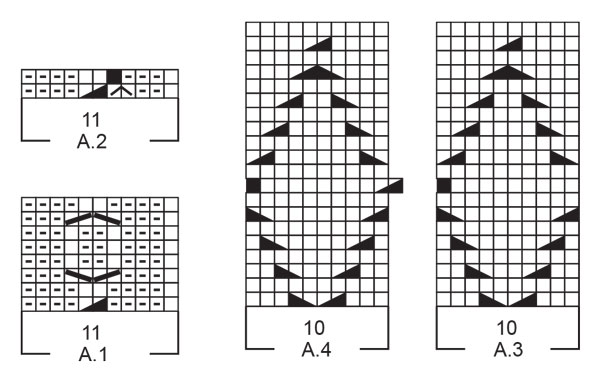
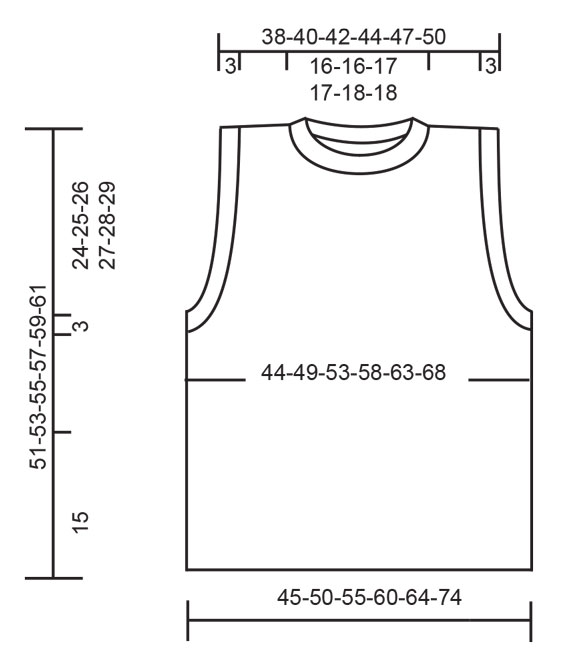
What can you do with our patterns? You can share DROPS patterns online, using the pattern original picture, materials, name and number. But you are NOT ALLOWED to reproduce the complete pattern digitally in any way. Yarn stores are welcome to use the DROPS pattern database to promote the sale of our assortment. You can print out our patterns, make as many copies as you’d like. The only thing we ask is that you don't make any changes / additions to the original printed document. And that the patterns according to the DROPS philosophy are given out to the consumers for free. Editorials that wish to publish our patterns in printed books or magazines can contact us for more information. The sale of garments based on DROPS patterns is permitted as long as they are sold as single items or per order. Further commercial use of the patterns is not permitted. It has to be clearly stated that the garment is made based on a design from DROPS DESIGN. The use of clothing labels of which DROPS DESIGN forms part is conditioned by the inclusion of the following text: “A DROPS DESIGN made by …..”. The use of DROPS photos for marketing purposes/sales is only permitted in connection with the use/sale of DROPS products. The photos may not be cut or edited and the logo should be clearly visible.
We reserve the right to withdraw the permission for use of our patterns at any time, notwithstanding the reason.
Each of our patterns has specific tutorial videos to help you.
These step-by-step tutorials might also help you:
Why is the knitting/crochet tension so important?
Knitting tension is what determines the final measurements of your work, and is usually measured per 10 x 10 cm. It is provided like so: number of stitches in width x number of rows in height - eg: 19 stitches x 26 rows = 10 x 10 cm.
The knitting tension is very individual; some people knit/crochet loosely while others work tightly. You adjust the knitting tension with the needle size, which is why the suggested needle size is only meant as a guide! You need to adjust this (up or down) to ensure that YOUR knitting tension matches the knitting tension provided in the pattern. If you work with a different knitting tension than provided you will have a different yarn consumption, and your work will have different measurements than what the pattern suggests.
The knitting tension also determines which yarns can replace each other. As long as you achieve the same knitting tension you can replace one yarn with another.
See DROPS lesson: How to measure your tension/gauge
See DROPS video: How to make a gauge tension swatch
How do I know how many balls of yarn I need?
The required amount of yarn is provided in grams, eg: 450 g. To calculate how many balls you’ll need you first need to know how many grams are in 1 ball (25g, 50g or 100g). This information is available if you click on the individual yarn quality on our pages. Divide the amount required with the amount of each ball. For example, if each ball is 50g (the most common amount), the calculation will be as follows: 450 / 50 = 9 balls.
Can I use a different yarn than what the pattern suggests?
The important thing when changing from one yarn to another is that the knitting/crochet tension remains the same. This is so that the measurements of the finished piece will be the same as on the sketch provided. It is easier to achieve the same knitting tension using yarns from the same yarn group. It is also possible to work with multiple strands of a thinner yarn to achieve the knitting tension of a thicker one. Please try our yarn converter. We recommend you to always work a test swatch.
Please NOTE: when changing yarn the garment might have a different look and feel to the garment in the photo, due to individual properties and qualities of each yarn.
See DROPS lesson: Can I use a different yarn than the one mentioned in the pattern?
What are the yarn groups?
All our yarns are categorised into yarn groups (from A to F) according to thickness and knitting tension – group A contains the thinnest yarns and group F the thickest. This makes it easier for you to find alternative yarns to our patterns, should you wish to switch yarn. All yarns within the same group have a similar knitting tension and can easily replace each other. However, different yarn qualities have different structures and properties which will give the finished work a unique look and feel.
How do I use the yarn calculator?
At the top of all our patterns you’ll find a link to our yarn calculator, which is a helpful tool should you wish to use a different yarn than suggested. By filling in the yarn quality you wish to replace, the amount (in your size) and number of strands, the calculator will present good alternative yarns with the same knitting tension. Additionally it will tell you how much you’ll require in the new qualities and whether you’ll need to work with multiple strands. Most skeins are 50g (some are 25g or 100g).
If the pattern is worked with multiple colours, every colour will have to be calculated separately. Similarly, if the pattern is worked with several strands of different yarns (for example 1 strand Alpaca and 1 strand Kid-Silk) you will have to find alternatives for each, individually.
Why do you show discontinued yarns in the patterns?
Since different yarns have different qualities and textures we have chosen to keep the original yarn in our patterns. However, you can easily find options among our available qualities by using our yarn calculator, or simply pick a yarn from the same yarn group.
It is possible that some retailers still have discontinued yarns in stock, or that someone has a few skeins at home that they would like to find patterns for.
The yarn calculator will provide both alternative yarn as well as required amount in the new quality.
What size should I knit?
If you think it's hard to decide what size to make, it can be a good idea to measure a garment you own already and like the size of. Then you can pick the size by comparing those measures with the ones available in the pattern's size chart.
You'll find the size chart at the bottom of the pattern.
See DROPS lesson: How to read size chart
Why do I get the wrong knitting tension with the suggested needle size?
The needle size provided in the pattern serves only as a guide, the important thing is to follow the knitting tension. And since knitting tension is very individual, you will have to adjust the needle size to ensure that YOUR tension is the same as in the pattern – maybe you’ll have to adjust 1, or even 2 needle sizes, up or down to achieve the correct tension. For this, we recommend that you work test swatches.
Should you work with a different knitting tension than the one provided, the measurements of the finished garment might deviate from the measurement sketch.
See DROPS lesson: How to measure your tension/gauge
See DROPS video: How to make a tension/gauge swatch
Why is the pattern worked top-down?
Working a garment top-down provides more flexibility and room for personal adjustment. For example it is easier to try the garment on while working, as well as making adjustments to length of yoke and shoulder caps.
The instructions are carefully explaining every step, in the correct order. Diagrams are adjusted to the knitting direction and are worked as usual.
How do I work according to a knitting diagram?
The diagram depicts all rows/rounds, and every stitch seen from the right side. It is read from bottom to top, from right to left. 1 square = 1 stitch.
When working back and forth, every other row is worked from the right side and every other row is worked from the wrong side. When working from the wrong side, the diagram will have to be worked reversed: from left to right, knit stitches are purled, purl stitches are knit etc.
When working in the round every round is worked from the right side and the diagram are worked from right to left on all rounds.
See DROPS lesson: How to read knitting diagrams
How do I work according to a crochet diagram?
The diagram depicts all rows/rounds, and every stitch seen from the right side. It is worked from bottom to top, from right to left.
When working back and forth every other row is worked from the right side: from right to left and every other row is worked from the wrong side: from left to right.
When working in the round, every row in the diagram are worked from the right side, from right to left.
When working a circular diagram you start in the middle and work your way outwards, counter clockwise, row by row.
The rows usually start with a given number of chain stitches (equivalent to the height of the following stitch), this will either be depicted in the diagram or explained in the pattern.
See DROPS lesson: How to read crochet diagrams
How do I work several diagrams simultaneously on the same row/round?
Instructions for working several diagrams after each other on the same row/round, will often be written like so: “work A.1, A.2, A.3 a total of 0-0-2-3-4 times". This means you work A.1 once, then A.2 is worked once, and A.3 is repeated (in width) the number of times provided for your size – in this case like so: S = 0 times, M = 0 times, L=2 times, XL= 3 times and XXL = 4 times.
The diagrams are worked as usual: begin with the first row in A.1, then work the first row in A.2 etc.
See DROPS lesson: How to read knitting diagrams
See DROPS lesson: How to read crochet diagrams
Why are the sleeves shorter in larger sizes?
The total width of the garment (from wrist-to-wrist) will be larger in the larger sizes, despite the actual sleeves being shorter. The larger sizes have longer sleeve caps and wider shoulders, so there will be a good fit in all sizes.
Where on the garment is the length measured?
The measurement sketch/schematic drawing provides information regarding the full length of the garment. If it’s a jumper or a jacket the length is measured from the highest point on the shoulder closest to the neckline, and straight down to the bottom of the garment. It is NOT measured from the tip of shoulder. Similarly, the length of yoke is measured from the highest point on the shoulder and down to where yoke is split into body and sleeves.
On a jacket measures are never taken along bands, unless specifically stated. Always measure inside band stitches when measuring the length.
See DROPS lesson: How to read a schematic drawing
What is a repeat?
Diagrams are often repeated on the round or in height. 1 repeat is the diagram the way it appears in the pattern. If it says to work 5 repeats of A.1 in the round, then you work A.1 a total of 5 times after/next to each other in the round. If it says to work 2 repeats of A.1 vertically/in height you work the entire diagram once, then begin again at the start and work the entire diagram one more time.
Why does the piece start with more chain stitches than it’s worked with?
Chain stitches are slightly narrower than other stitches and to avoid working the cast-on edge too tight, we simply chain more stitches to begin with. The stitch count will be adjusted on the following row to fit the pattern and measurement sketch.
Why increase before the rib edge when the piece is worked top-down?
The rib edge is more elastic and will contract slightly compared to, for example, stocking stitch. By increasing before the rib edge, you avoid a visible difference in width between the rib edge and the rest of the body.
Why increase in the cast-off edge?
It’s very easy to cast off too tightly, and by making yarn overs while casting off (and simultaneously casting these off) you avoid a too tight cast off edge.
See DROPS video: How to bind off with yarn overs (yo)
How do I increase/decrease on every 3rd and 4th row/round alternately?
To achieve an even increase (or decrease) you can increase on, for example: every 3rd and 4th row alternately, like so: work 2 rows and increase on the 3rd row, work 3 rows and increase on the 4th. Repeat this until the increase is complete.
See DROPS lesson: Increase or decrease 1 st on every 3rd and 4th row alternately
How can I work a jacket in the round instead of back and forth?
Should you prefer to work in the round instead of back and forth, you may of course adjust the pattern. You’ll need to add steeks mid-front (usually 5 stitches), and follow the instructions. When you would normally turn and work from the wrong side, simply work across the steek and continue in the round. At the end you’ll cut the piece open, pick up stitches to work bands, and cover the cut edges.
See DROPS video: How to knit steeks and cut open
Can I work a jumper back and forth instead of in the round?
Should you prefer to work back and forth instead of in the round, you may of course adjust the pattern so you work the pieces separately and then assemble them at the end. Divide the stitches for the body in 2, add 1 edge stitch in each side (for sewing) and work the front and back pieces separately.
See DROPS lesson: Can I adapt a pattern for circular needles into straight needles?
Why is the pattern slightly different than what I see in the photo?
Pattern repeats can vary slightly in the different sizes, in order to get the correct proportions. If you’re not working the exact same size as the garment in the photo, yours might deviate slightly. This has been carefully developed and adjusted so that the complete impression of the garment is the same in all sizes.
Make sure to follow instructions and diagrams for your size!
How do I make a women’s size garment into a men’s size one?
If you have found a pattern you like which is available in women’s size it’s not very difficult to convert it to men’s size. The biggest difference will be the length of sleeves and body. Start working on the women size that you think would fit across the chest. The additional length will be worked right before you cast off for the armhole/sleeve cap. If the pattern is worked top-down you can add the length right after the armhole or before the first decrease on sleeve.
Regarding additional yarn amount, this will depend on how much length you add, but it is better with a skein too many than too few.
How do I prevent a hairy garment from shedding?
All yarns will have excess fibres (from production) that might come off as lint or shedding. Brushed yarns (ie hairier yarns) have more of these loose, excess fibres, causing more shedding.
Shedding also depends on what is worn under or over the garment, and whether this pulls at the yarn fibres. It’s therefore not possible to guarantee that there will be no shedding
Below are some tips on how to get the best result when working with hairier yarns:
1. When the garment is finished (before you wash it) shake it vigorously so the looser hairs come off. NOTE: do NOT use a lint roller, brush or any method that pulls at the yarn.
2. Place the garment in a plastic bag and put it in your freezer - the temperature will cause the fibres to become less attached to each other, and excess fibres will come off easier.
3. Leave in the freezer for a few hours before taking it out and shaking it again.
4. Wash the garment according to the instructions on the yarn label.
Why does my garment pill?
Pilling is a natural process that happens to even the most exclusive of fibers. It's a natural sign of wear and tear that is hard to avoid, and that is most visible in high friction areas of your garment like a sweater's arms and cuffs.
You can make your garment look as new by removing the pilling, using a fabric comb or a pill/lint remover.
In the meantime, you can read the questions and answers that others have left to this pattern or join the DROPS Workshop on Facebook to get help from fellow knitters/crocheters!
You might also like...
Diamond Sky |
|||||||||||||||||||||||||
 |
 |
||||||||||||||||||||||||
Knitted vest / slipover in DROPS Lima or DROPS Merino Extra Fine. Piece is knitted with cables, textured pattern, double neck edge and sleeve edges. Size: S - XXXL
DROPS 228-8 |
|||||||||||||||||||||||||
|
---------------------------------------------------------- EXPLANATION FOR THE PATTERN: ---------------------------------------------------------- GARTER STITCH (back and forth): Knit all rows. 1 ridge vertically = knit 2 rows. PATTERN: See diagrams A.1 to A.4. Diagrams show all rows in pattern seen from the right side. CAST-OFF TIP: To avoid a tight cast-off edge when casting off, you may use a larger needle. If this still is too tight make 1 yarn over after approx. every 4th stitch while casting off (cast off yarn overs as stitches). ---------------------------------------------------------- START THE PIECE HERE: ---------------------------------------------------------- VEST – SHORT SUMMARY OF PIECE: Work front and back piece back and forth in 2 parts. Then assemble the piece at the shoulder seems and sew the side seams. Finish with a double neck edge and sleeve edges in the round on a circular needle. BACK PIECE: Cast on 104-115-126-137-148-159 stitches (including 2 edge stitches in each side) on circular needle size 4 mm with DROPS Lima or DROPS Merino Extra Fine. Purl 1 row from wrong side. Then work pattern as follows: 2 edge stitches in GARTER STITCH – read explanation above, A.1 over the next 99-110-121-132-143-154 stitches (= 9-10-11-12-13-14 repetitions of 11 stitches), work first stitch in A.1, 2 edge stitches in garter stitch. Continue back and forth until A.1 has been worked 5 times vertically. REMEMBER THE KNITTING TENSION. Work next row as follows: Knit 2 together (= 1 stitch decreased), work A.2 over every repetition of A.1 (1 stitch is decreased in each repetition A.2 = 9-10-11-12-13-14 stitches decreased), knit the next 3 together (= 2 stitches decreased), cast on 1 stitch at the end of row (= edge stitch). Turn and work 1 edge stitch in garter stitch, purl 1, work A.2 until 1 stitch remains, purl 1, cast on 1 stitch at the end of row (= 1 edge stitch in garter stitch) = 94-104-114-124-134-144 stitches on needle and piece measures approx. 15 cm. Now work pattern as follows: 1 edge stitch in garter stitch, 1 stitch in stocking stitch, A.3 over the next 10 stitches, A.4 over the next 80-90-100-110-120-130 stitches (= 8-9-10-11-12-13 repetitions of 10 stitches), work 1 stitch in stocking stitch, and finish with 1 edge stitch in garter stitch. Continue back and forth like this. On 9th row in A.4 knit 1 when last repetition is finished. When piece measures 24-25-26-27-28-29 cm, cast off 6-6-9-9-12-12 stitches for armholes at the beginning of the next 2 rows. Then cast off stitches in each side (cast off stitches at the beginning of the row) as follows: Cast off 2 stitches on every other row 1-2-2-2-2-2 times, then cast off 1 stitch on every other row 1-1-1-3-3-5 times and finally 1 stitch every 4th row 4-5-5-6-5-5 times = 68-72-76-80-86-92 stitches. Continue to work until piece measures 49-51-53-55-57-59 cm. Now cast off the middle 32-32-34-34-36-36 stitches for neck and finish each shoulder separately. Then cast off 1 stitch on next row from the neck = 17-19-20-22-24-27 stitches remain on each shoulder. Now finish each shoulder separately. Continue to work until piece measures 51-53-55-57-59-61 cm. Cast off knitting from right side. Work the other shoulder the same way. FRONT PIECE: Cast on and work as on back piece until piece measures 43-45-46-48-49-51 cm. Now slip the middle 16-16-18-18-20-20 stitches on a stitch holder and finish each shoulder separately. Then cast off stitches on every row from neck as follows: Cast off 3 stitches 1 time, 2 stitches 2 times and 1 stitch 2 times = 17-19-20-22-24-27 stitches remain for shoulder. Cast off when piece measures 51-53-55-57-59-61 cm. Work the other shoulder the same way. ASSEMBLY: Sew the shoulder seams. Sew side seam from armholes and down to where 1 edge stitch was cast on in each side (= approx. 15 cm vent). DOUBLE SLEEVE EDGES: Begin mid under sleeve in side seam and pick up approx. 136 to 162 stitch around armhole with circular needle size 3 mm and DROPS Lima or DROPS Merino Extra Fine. Number of stitches must be divisible by 2. Work rib in the round (= knit 1/purl 1) for 6 cm. Cast off – read CAST-OFF TIP. Fold the rib around sleeves on inside of garment. Fasten rib to get a double sleeve edge. To avoid a tight sleeve edge that sticks out it is important to keep the seam elastic. DOUBLE NECK EDGE: Pick up from right side approx. 100 to 116 stitches (including stitch on stitch holder) inside 1 edge stitch around the neck on circular needle size 3 mm with DROPS Lima or DROPS Merino Extra Fine. Number of stitches must be divisible by 2. Work rib in the round (= knit 1/purl 1) for 10 cm. Now increase 1 purl stitch in approx. every other section with purl stitches. Then work knit over knit and purl over purl until neck edge measures 14 cm. Cast off stitches with knit over knit and purl over purl - make sure to avoid a tight neck edge - remember CAST-OFF TIP. Fold rib at the top of neck down on inside of garment. Fasten rib to get a double neck edge. To avoid a tight neck edge that sticks out it is important to keep the seam elastic. |
|||||||||||||||||||||||||
Diagram explanations |
|||||||||||||||||||||||||
|
|||||||||||||||||||||||||

|
|||||||||||||||||||||||||

|
|||||||||||||||||||||||||
|
Have you made this or any other of our designs? Tag your pictures in social media with #dropsdesign so we can see them! Do you need help with this pattern?You'll find tutorial videos, a Comments/Questions area and more by visiting the pattern on garnstudio.com. © 1982-2024 DROPS Design A/S. We reserve all rights. This document, including all its sub-sections, has copyrights. Read more about what you can do with our patterns at the bottom of each pattern on our site. |
|||||||||||||||||||||||||
With over 40 years in knitting and crochet design, DROPS Design offers one of the most extensive collections of free patterns on the internet - translated to 17 languages. As of today we count 304 catalogues and 11422 patterns - 11422 of which are translated into English (UK/cm).
We work hard to bring you the best knitting and crochet have to offer, inspiration and advice as well as great quality yarns at incredible prices! Would you like to use our patterns for other than personal use? You can read what you are allowed to do in the Copyright text at the bottom of all our patterns. Happy crafting!







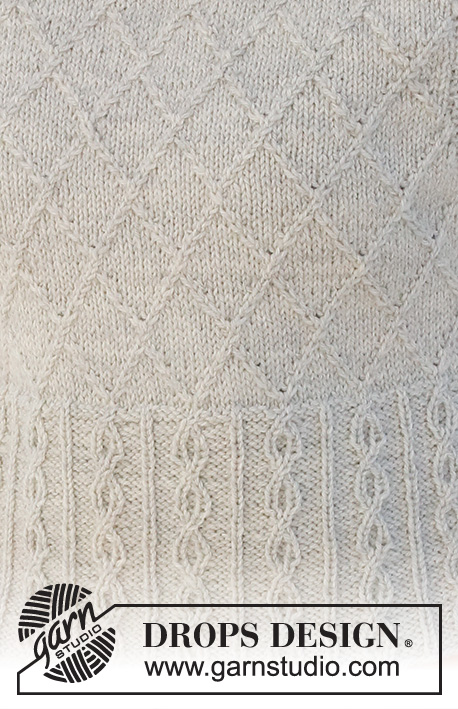






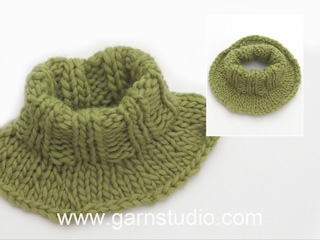
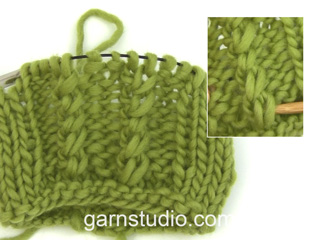






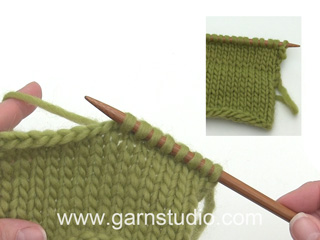












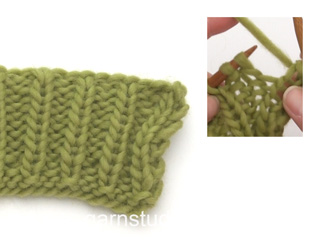


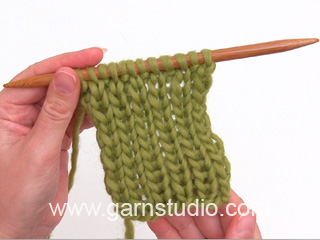































Comments / Questions (65)
Når man tager 1 maske ud i vrang masken i ribben i halskanten, hvordan strikker man så efterfølgende? Jeg kan kun få det til at blive 1 ret 1 vrang 1 ret 2 vrang og så videre
16.02.2022 - 17:47DROPS Design answered:
Hej Ann-Marie, Når du tager ud i hver 2.vrangparti, så strikker du 1r, 1vr, 1r, 2vr, 1r, 1vr, 1r, 2vr osv. God fornøjelse!
17.02.2022 - 15:24Vedr. rettelse fra 07/02-22. Der er ikke vist i selve optegnelse af diagrammet hvor den nye “maske snoning” skal være? Jeg sidder nu med en næsten færdig strikket vest!!! Desuden passer mængden af garn ikke. Jeg skal i hvertfald bestille 1 nøgle mere og jeg har overholdt strikkefastheden. Jeg strikker med drops merino extra fine. Størrelse S. Købte 6 nøgler på nettet. Skal nu bestille 1 mere og betale fragt + at jeg ikke kan få samme indfarvning. Ikke i orden!!!
15.02.2022 - 17:25DROPS Design answered:
Hej Ann-Marie, det burde virkelig være nok med 6 nøgler (hvis målene i måleskitsen og strikkefastheden er overholdt), vi beklager naturligvis og noterer din kommentar! Hvilket symbol siger du mangler i A.3 og A.4 og på hvilken pind? Så skal vi få design til at se på det.
16.02.2022 - 15:47Fel i mönstret? Såvitt jag kan se är det fel i varv två i mönsterdiagrammet A2. Varv 2 (=avigsidan) borde väl stickas: 1avig, 4 räta, 2aviga, 1”blank”, 3räta
06.02.2022 - 14:19DROPS Design answered:
Hej Ulla-Britt, Varv 2 i A.2 stickas från avigsidan: 4 räta, 2aviga, 3 räta, 1 avig. Lycka till :)
08.02.2022 - 07:47Jag undrar hur man gör när man ska öka i en dubbel halskant nu ökas det1 avigmaska i ca parti med avigmaskor. Vad betyder parti?
23.01.2022 - 22:28DROPS Design answered:
Hej Barbro. "Nu ökas det 1 avigmaska i ca vartannat parti med avigmaskor". Istället för att sticka 1 rm, 1 am så ökar du nu 1 maska i vartannat parti med avig maska så du kommer sen ha 1 rm, 1 am, 1 rm, 2 am, osv. Mvh DROPS Design
24.01.2022 - 07:21Jeg strikker str S i Merino ekstra fine og overholder strikkefastheden. Jeg kan se på billedet at der tages ind til ærmegab før de 24 cm som der beskrives. Kan det forklares? Jeg når at strikke 1 1/2 gange mønster. Det ser ud som om der er startet på ærmegab omkring 21cm? Er for- og bagstykke lige lange
16.01.2022 - 17:24DROPS Design answered:
Hej Ann-Marie, vesten er strikket i DROPS Lima som fylder lidt mere, hvilket kan være en forklaring. Men opskriften er skrevet for at vesten skal sidde som den gør på billedet, så det er bare at finde dine mål i måleskitsen og følge den opskrift som passer dig. God fornøjelse!
17.01.2022 - 15:36Boa tarde, para A3 e A4 este esquema está mesmo correcto? symbols = passar 1 malha para a agulha auxiliar, colocada atrás da peça, tricotar 1 malha meia, retomar a malha em espera e tricotá-la em liga symbols = passar 1 malha para a agulha auxiliar, colocada à frente da peça, tricotar 1 malha liga, retomar a malha em espera e tricotá-la em meia Na foto não parece que haja malhas de liga. Obrigada
14.01.2022 - 18:24DROPS Design answered:
Bom dia, Efectivamente, à primeira vista, parece não haver malhas liga no ponto de losângos em relevo. No entanto, as malhas liga dos torcidos vão ficar meio ocultas pelas malhas meia, ajudando a dar mais relevo. Mas vamos perguntar à equipa de designers e, se houver alguma falha, será adicionada uma correcção ao modelo. Bom tricô!
19.01.2022 - 10:46Bedankt voor het antwoord op mijn vorige vraag. Een andere vraag is deze: de 2 kabelsteken die je in A3 en A4 breit zijn toch niet meer een combinatie van een rechte en een averechte, terwijl de uitleg in de legende voor dat symbool zegt van wel. Als ik de foto bekijk, zie ik dat alle steken in de ruiten rechten zijn. Klopt dat?
07.01.2022 - 10:16DROPS Design answered:
Dag Mieke,
Ja, je hebt gelijk, in A.3 en A.4 worden alle steken recht gebreid aan de goede kant, dus ook in de kabel. Ik zal het doorgeven aan de ontwerpafdeling ter controle.
12.01.2022 - 10:02Diagramm Muster A3 und A4 werden die Mädchen in glatt rechts dargestellt, obwohl in der Beschreibung von li gestrickten Maschen der Zopfnadel geschrieben wird. Ist das Muster nun glatt rechts also auch Rückreihe ebenso? Oder auch Hinreihe mit linken Maschen, die dann rechts in der Rückreihe gestrickt werden? Danke für ihre Hilfe
03.01.2022 - 21:13DROPS Design answered:
Liebe Frau Strisi, Sie sind ja recht, bei A.1 wird man die Maschen so (links) stricken, aber in A.3 und A.4 sollen die Maschen glatt rechts gestrickt - unser Designteam wird das mal prüfen, danke für den Hinweis. Viel Spaß beim stricken!
04.01.2022 - 07:22Ik brei maat M en ik zie niet hoe de eerste en tweede naald eruit zien na het breien van A1. De eerste 2 st samenbreien, bedoel je dan de 2 ribbelsteken aan het begin van de naald? Waar moeten 3st samengebreid worden in deze nld? Kan je mij de eerste 2 nld steek voor steek uitschrijven voor maat M ? Dank!
03.01.2022 - 20:18DROPS Design answered:
Dag Mieke,
Je breit inderdaad de eerste 2 ribbelsteken recht samen en je breit A.3 over A.1 waarbij je zorgt dat het midden van A.3 boven het midden van A.1 komt en je breit steeds de eerste 2 steken van iedere herhaling samen. In het midden van A.3 brei je kabels zoals aangegeven in het telpatroon. De tweede naald van A.3 is een teruggaande naald, dus die brei je averecht.
06.01.2022 - 09:53Jeg er færdig med nederste kant og er gået i gang med A3 og A4. Der står, at masken på snoningspinden hhv foran og bagved arbejdet skal strikkes "vrang". Resten af mønsteret er strikket i ret. Jeg synes, det ser lidt mærkeligt ud - har jeg forstået det korrekt, eller skal jeg strikke alle masker "ret", også dem på snoningspinden?
03.01.2022 - 10:56DROPS Design answered:
Hei Birthe. Ved 1.diagramikon (strek over 2 masker, fra øverste høyre hjørne og ned til venstre hjørne) strikkes det slik: Sett 1 maske på flettepinnen BAK arbeidet, strikk 1 rett, strikk 1 VRANG fra flettepinnen. Ved 2.diagramikon (strek over 2 masker, fra øverste venstre hjørne og ned til høyre hjørne) strikkes det slik: Sett 1 maske på flettepinnen FORAN arbeidet, strikk 1 VRANG, strikk 1 rett fra flettepinnen. Fra vrangen strikkes alle masker vrang. Da vil du få det mønstret du ser på vesten. mvh DROPS Design
14.01.2022 - 11:07